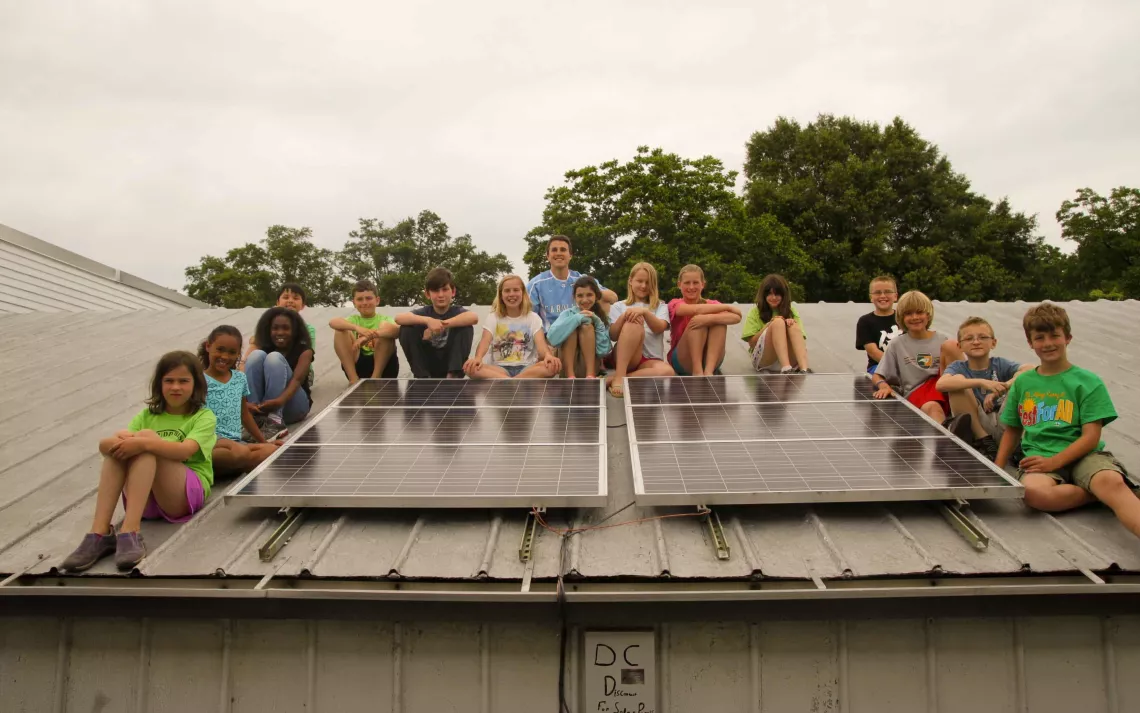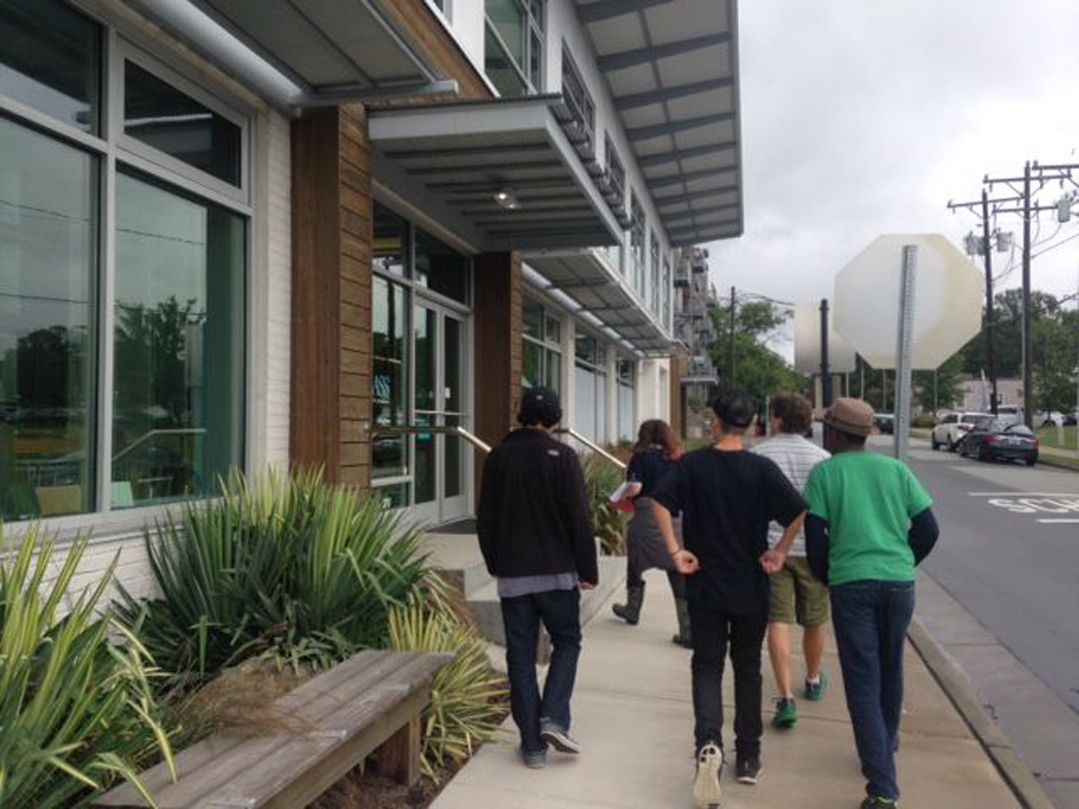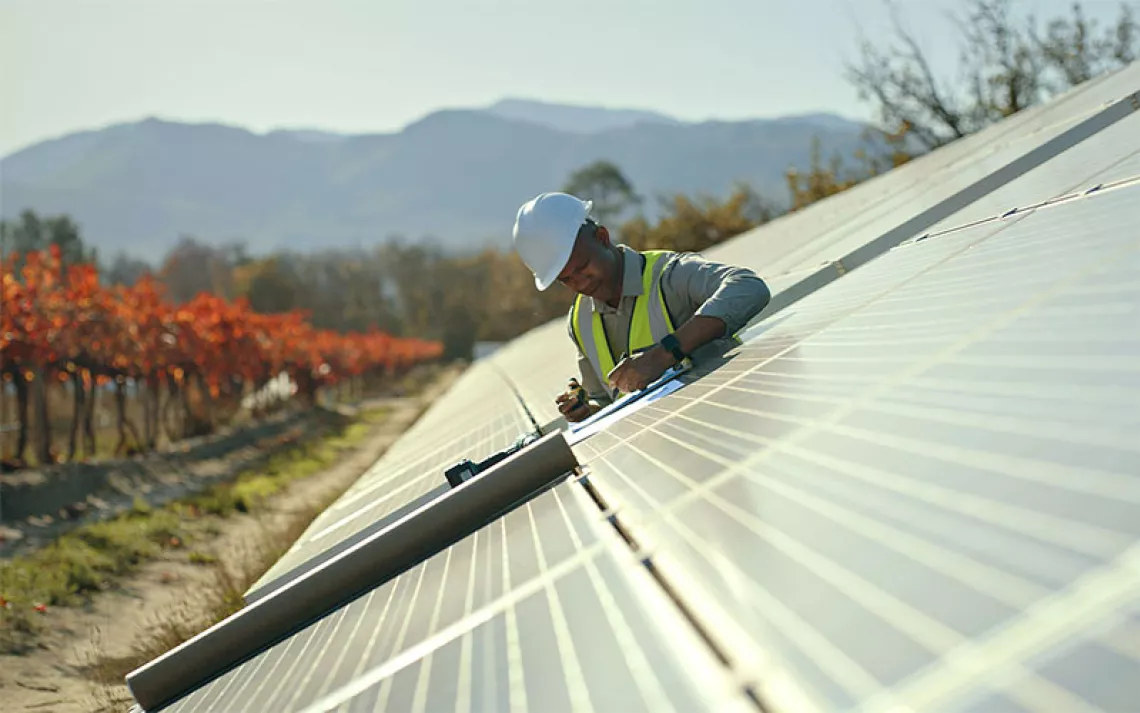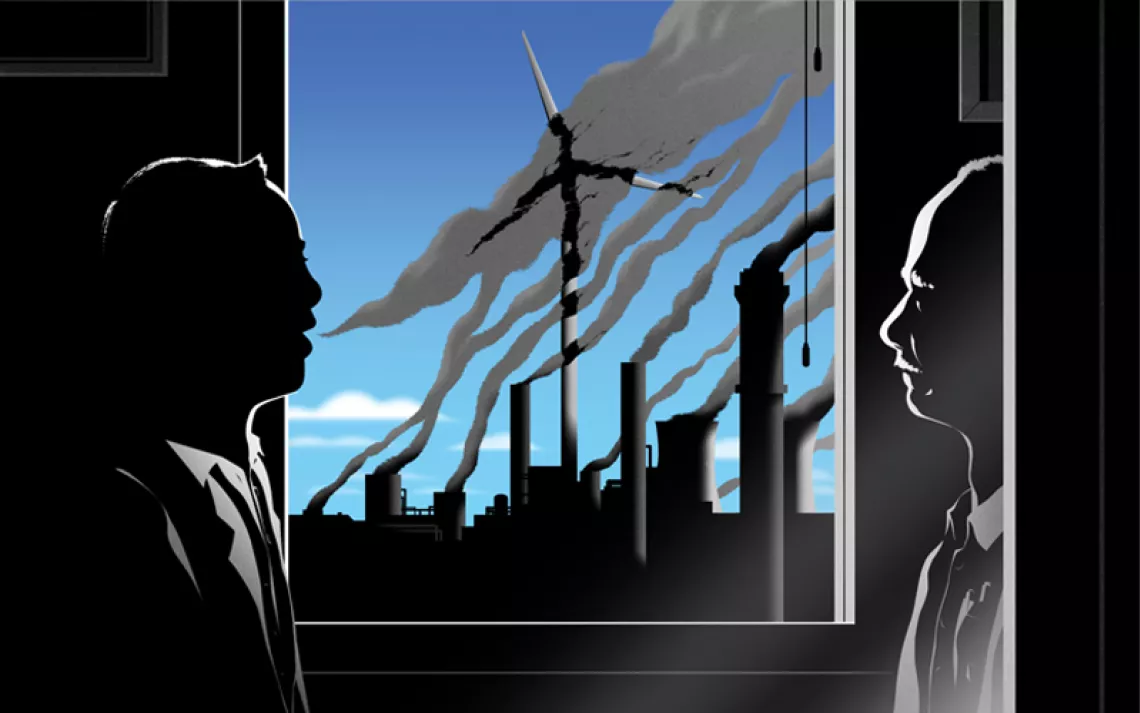Building a Solar School in North Carolina

Aaron Sebens and his students took Durham Central Park School off-grid when they installed solar panels on the roof three years ago. Now they want to extend their school's capacity to feed into the local grid. | Photo courtesy of Durham Central Park School
On a rainy afternoon last September, four middle-school students entered a glass-supply store in downtown Durham, North Carolina. They wore ball caps, sneakers, and determined expressions. Though surrounded by elaborate fixtures and high-end shower displays, they weren't there to buy glass. They were there to sell power.
The students fanned out, and Shea Pritchard, 13, kicked off their pitch: “Hi there. We are from the Central Park Middle School, and we are doing a project that we would like to talk to you about.” The store’s owner and a sales associate gathered behind a counter to listen. “We are trying to put up five kilowatts of solar panels to make our school grid-tied and to supply clean energy to downtown Durham.” Pritchard told them. Anna Narin, also 13, jumped in: “Here’s how you can get involved.”
Most 13-year-olds don’t know their way around a solar-panel rack, charge converter, or feed-in-tariff scheme. But these kids do. Three years ago their school became perhaps the first in the Southeast to retrofit a classroom to be powered entirely by solar and wind energy. After a successful Kickstarter campaign that raised hundreds of dollars from 27 states and 10 countries, the students—Pritchard and Nurin among them—installed (with some parental assistance) six solar panels (780 watts) and a wind turbine on the roof of their elementary school building.
Now, inspired by the enthusiasm that project generated in the school and community, they want to up the ante by installing a second solar array on the nearby middle-school building. This second array, which would be seven times larger than the first, would feed power into the local grid.
"We'd become one of the only schools in the country that can showcase the full spectrum of solar potential," says Aaron Sebens, the teacher-mastermind behind the solar-school project. Sebens is fit and tan, with wavy brown hair just a few inches past tidy. He looks like he would inspire confidence in wilderness settings. As it is, the elementary school library that serves as his de facto staging ground feels a bit wild, with student illustrations of North Carolina’s low mountains and swampy coasts adorning the walls (the result of a class project on appreciating state parks) and children running in and out to grab books or drop off assignments.
“Our first project really opened our eyes to what we could achieve by reaching out to the community,” Sebens explained in the library one morning. He sees this new project as a way of giving back by modeling what is possible. NC GreenPower, a North Carolina–based nonprofit that supports renewable energy growth in the state, shares Sebens’s enthusiasm: It has promised the Central Park School a $10,000 grant plus installation assistance for the project, with an additional $10,000 to come from the State Employee's Credit Union, if Sebens’s students can raise $12,400 in matching funds.
If this sounds ambitious for a small charter school in central North Carolina, it is. But it is also in keeping with the ethos of the state. Despite a current swing to conservative politics, for many years North Carolina has been a national leader in solar power. For a time, the state offered some of the best tax incentives in the country for solar investments, and, in 2014, this southern state was second only to California in solar capacity installation.As a consequence, North Carolina currently has the country's third-highest installed solar capacity. A state once known for tobacco farming now increasingly harvests energy.
Nevertheless, even in progressive cities like Durham there’s still a long way to go before renewable power is ubiquitous. That's something Sebens and his students are trying to change.

Aaron Sebens and his students pound the pavement in downtown Durham in search of businesses willing to donate to their school's planned solar array. | Photo by Aaron Reuben
At the glass store, Anna Narin explained what a business would get for contributing to their new project. For $250, she tells the store’s owner, “You will be listed as a contributor in all our press.” For $500, the local business would receive a window decal that announces it as a member of the “Downtown Durham Solar Collaborative.” For $1,000 it would be immortalized on a plaque at the school.
“So there’s no Downtown Durham Solar Collaborative yet,” Sebens admits. “But the great thing about something not existing is you get to create it.” Part of the reason Sebens’s students are now raising money from local businesses, rather than just parents or families, is that they want to bring together like-minded businesses and institutions into a network that can some day foster and celebrate greater advancements in local clean power generation.
On their first pitch of the day, the students lucked out. The employees at the glass store were excited. Their building is LEED certified, the owner told the students, and among other sustainable features, like gray-water recycling, “we actually have solar panels on our roof,” she said.
The 13-year-olds left a pamphlet on their project and shuffled out into the street, where it had begun to rain lightly. “That went well,” said Khaliq Brown. He was relieved they hadn’t been asked more questions. The group walked briskly—they had at least five more businesses to visit and were steeling themselves against less-welcoming receptions. As they turned south toward Rise, a new bakery that was selling, according to the store, “the best dang biscuits and donuts” in town, Brown broke into a smile. “I really didn’t think they’d have solar panels already,” he said.
Watch the video that CPSC Middle School students made to help raise the money for their project:
 The Magazine of The Sierra Club
The Magazine of The Sierra Club







